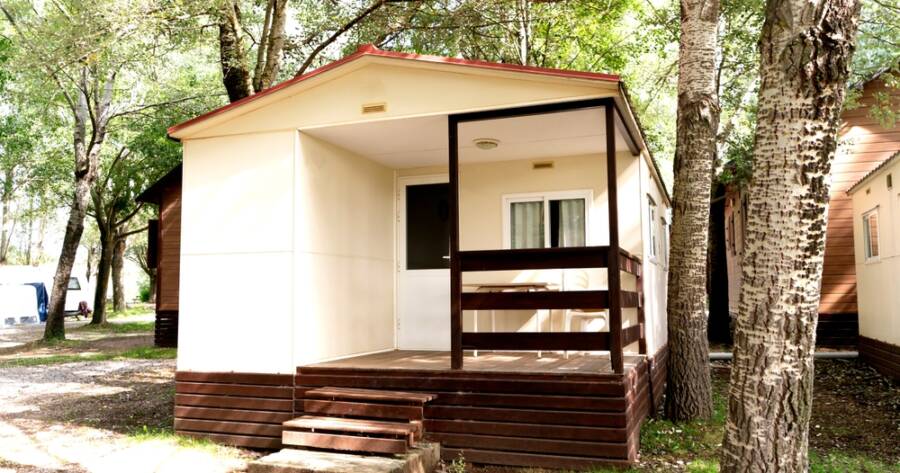As housing costs rise and the desire for more accessible living solutions grows, prefabricated homes, also known as prefab homes, have become increasingly popular among seniors. These homes offer a combination of affordability, convenience, and customization that appeals to older adults.
1. Affordability and Cost-Effectiveness
One of the primary reasons seniors are turning to prefabricated homes is their cost-effectiveness. Traditional home construction can be expensive, with costs continually rising due to inflation, supply chain issues, and labor shortages. Prefab homes, on the other hand, are built in factories where materials are purchased in bulk, reducing overall costs.
For seniors, many of whom are living on fixed incomes, the lower price point of prefab homes allows for greater financial flexibility.1 They can invest in a comfortable living space without the burden of a large mortgage, making prefab homes an attractive option for those looking to manage their retirement savings wisely.
2. Speed of Construction and Ease of Setup
Prefabricated homes are known for their quick construction timelines. Since these homes are built in controlled factory environments, they are not subject to weather delays or other on-site challenges that can slow down traditional construction. This means a prefab home can be completed in a matter of weeks, compared to months for conventional homes.
For seniors, the speed and simplicity of moving into a prefabricated home are significant advantages. Many older adults may be looking to downsize quickly due to changes in health, lifestyle, or finances. The ability to have a home ready in a short amount of time makes prefab homes an ideal solution for those needing to relocate without a lengthy wait.
3. Customization and Accessibility Features
Modern prefabricated homes offer a high level of customization, which is especially appealing to seniors who may have specific accessibility needs. Many manufacturers provide options to include features such as wider doorways, ramps, step-free showers, and grab bars—amenities that are crucial for individuals with mobility challenges.
Additionally, the layout of prefab homes can be tailored to suit the needs of senior living, emphasizing single-story designs that minimize the need for stairs and focus on easy navigation. This level of personalization ensures that seniors can create a living space that caters specifically to their lifestyle and physical requirements, promoting independence and comfort.
4. Energy Efficiency and Sustainability
Seniors are also increasingly conscious of their environmental impact and the cost of utilities. Prefabricated homes are often built with energy-efficient materials and advanced insulation techniques, which help reduce heating and cooling costs.2 Many prefab homes are designed with sustainability in mind, incorporating solar panels, energy-efficient windows, and eco-friendly building materials.
These energy-saving features not only contribute to a lower carbon footprint but also help seniors manage their monthly expenses, making prefab homes an attractive option for those looking to reduce their living costs and environmental impact simultaneously.
5. Community and Lifestyle Benefits
Another appealing aspect of prefabricated homes for seniors is the opportunity to be part of like-minded communities. Many prefab homes are set up in dedicated communities or parks that cater to seniors, offering a sense of community, security, and shared amenities such as clubhouses, gardens, and walking paths.
These communities often provide social opportunities, reducing the risk of isolation that some seniors may face when living alone. The sense of belonging and access to peer support can greatly enhance the quality of life for seniors, making prefab homes a preferred option for those seeking an active and engaging lifestyle in their golden years.
6. Adaptability for Future Needs
As seniors age, their housing needs can change. Prefabricated homes offer flexibility that can be crucial as needs evolve. Whether it’s adding additional accessibility features, expanding living spaces, or even relocating the entire home, prefab homes provide options that traditional homes may not. This adaptability ensures that the home can continue to meet the needs of the resident over time, providing a long-term solution that grows with them.
Final Thoughts
Prefabricated homes are quickly becoming a popular choice for seniors, offering a blend of affordability, customization, and convenience that meets the unique needs of older adults. As the demand for accessible, cost-effective housing options grows, prefab homes stand out as a practical and attractive solution. For seniors looking to downsize, maintain independence, and join supportive communities, prefabricated homes provide a flexible and sustainable path forward in 2024 and beyond.
